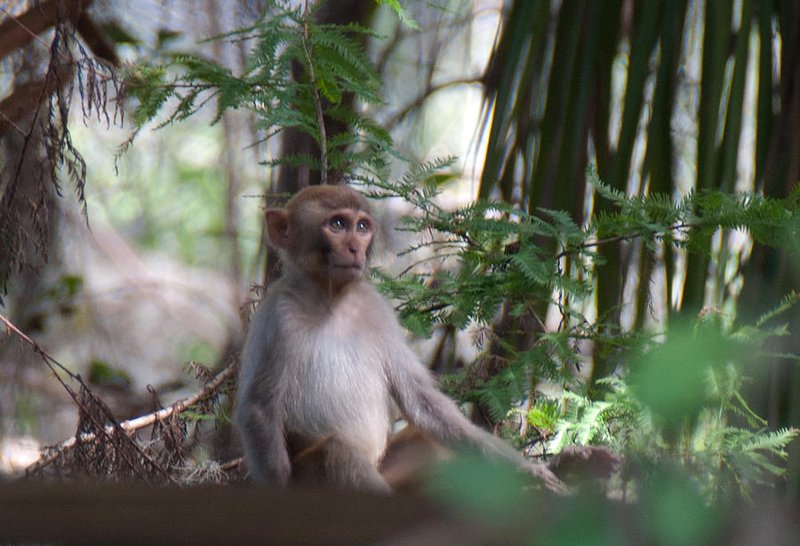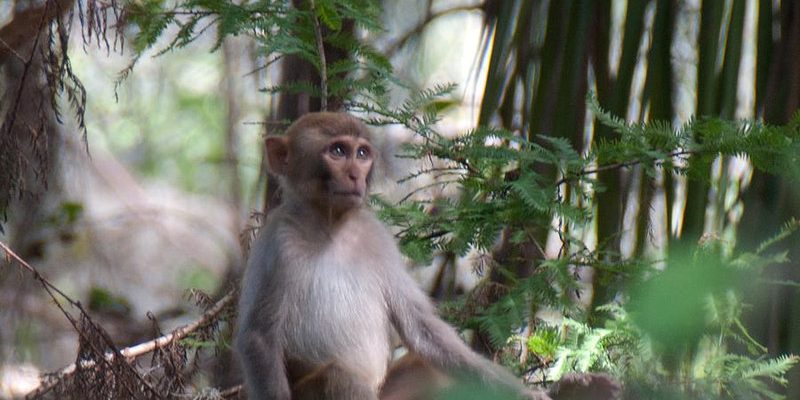
The Rhesus Macaque is one of the most recognized primates in the world, often seen in films, documentaries, and even in our city streets. With their expressive faces and social behaviors, these monkeys can capture your attention in moments. Imagine walking through a park and spotting a group of them playing, grooming, or simply hanging out—it’s like witnessing a live episode of a nature show!
Native to South and Central Asia, the Rhesus Macaque has a fascinating story that ties it closely to humans. They are highly adaptable, thriving in a variety of environments, including forests, savannahs, and even urban areas. You might be wondering about their role in our ecosystem or how they interact with human populations. Get ready to dive into the world of these incredible creatures!
Physical Characteristics
Rhesus Macaques are medium-sized primates, with adults typically weighing between 14 to 40 pounds. They possess a distinctive fur coat that ranges from light brown to gray, and their faces are adorned with a unique pinkish hue. If you ever see one, you’ll notice their expressive eyes and long tails, which aid them in balance as they navigate through trees and rocky terrains.
Another striking feature is their facial expressions. Rhesus Macaques can convey a range of emotions—from curiosity and fear to aggression and affection—through their facial cues. This expressiveness is essential for their complex social interactions. You might find it interesting to observe how they communicate with each other, using various sounds and body language.
The size of Rhesus Macaques varies depending on their habitat and diet. Those living in urban areas may have access to different food sources compared to those in the wild, which can influence their growth and appearance. This adaptability is a key reason why they thrive in varied environments.
Habitat and Distribution
Rhesus Macaques are primarily found across a vast geographical range that includes northern India, Afghanistan, Bangladesh, and some parts of China. They prefer habitats with dense vegetation, such as forests and wetlands, but their remarkable adaptability allows them to thrive in urban settings, too. In cities, they can be spotted rummaging through trash or even stealing food from unsuspecting tourists.
This adaptability to different environments is fascinating. Rhesus Macaques can live in areas ranging from snow-capped mountains to hot, humid forests. They have a flexible diet that includes fruits, seeds, and small animals, which allows them to adjust their foraging habits based on their surroundings. If you think about it, it’s a survival skill we could all learn something from!
Their presence in urban areas often leads to human-animal interactions, which can be both amusing and troublesome. Sometimes, people feed them, inadvertently creating a dependence on human food, which can lead to conflict. This balancing act between their natural behaviors and urban life makes the Rhesus Macaque a compelling subject of study.
Diet and Feeding Habits
The diet of Rhesus Macaques is quite diverse and can change based on the resources available in their habitat. They are primarily herbivorous, enjoying a range of fruits, seeds, and leaves. However, they are opportunistic feeders, which means they won’t shy away from insects, small animals, or even human food if it’s available. Imagine walking through a park and encountering a mischievous Rhesus Macaque snagging a snack from a picnic!
In the wild, they forage in troops, using their social structure to find and share food. This cooperative feeding behavior not only helps them find more resources but also strengthens their social bonds. When you watch them interact, it’s clear they have a complex social hierarchy that plays a crucial role in their survival.
Interestingly, their diet can also vary seasonally. During certain times of the year, specific fruits may become abundant, leading to changes in their foraging strategies. Understanding their feeding habits gives us insight into how they adapt and survive in both natural and urban environments.
Social Structure and Behavior
One of the most captivating aspects of Rhesus Macaque life is their social structure. They live in groups called troops, typically consisting of 20 to 100 individuals. These troops are often led by dominant males, but females play a crucial role as well. You might find it intriguing how their social interactions resemble those of humans in many ways—there’s hierarchy, friendships, and even rivalries!
Within the troop, Rhesus Macaques engage in various behaviors to maintain their social bonds. Grooming is a vital activity that helps reinforce relationships and reduce tension. When you see two monkeys grooming each other, it’s more than just hygiene; it’s a form of communication and affection. It’s like a social event where they check in on each other.
Rhesus Macaques are known for their intelligence and problem-solving skills. They communicate with each other using a range of vocalizations, facial expressions, and body language. If you’ve ever watched a group of them, you might notice how they seem to read each other’s moods and respond accordingly. It’s a reminder that, despite their differences, we share some fundamental social traits with these fascinating creatures.
Reproduction and Lifecycle
The reproduction process in Rhesus Macaques is quite interesting. Females typically reach sexual maturity around the age of 2.5 to 3 years, while males mature a bit later. Their mating season varies based on environmental conditions, but it usually peaks during the warmer months. Courtship is a fascinating dance, with males often displaying their strength and agility to attract females.
Once mating occurs, the gestation period lasts about 165 days, after which a single infant is usually born. Infants are incredibly vulnerable, relying on their mothers for care and protection. You might be touched by how nurturing Rhesus Macaque mothers can be, cradling their young and teaching them essential survival skills as they grow.
As infants grow, they begin to explore their surroundings, learning to climb trees and forage for food. By the age of 6 months, they become more independent, but they often stay close to their mothers for support. This nurturing environment helps them develop the skills they need to thrive within their social structure. Observing this process can give you a greater appreciation for their complex family dynamics.
Conservation Status
Despite their adaptability, Rhesus Macaques face various threats that can impact their populations. *Habitat loss* due to urban development and agricultural expansion poses significant risks. As their natural environments shrink, these monkeys often find themselves in closer contact with humans, leading to conflicts over resources.
Additionally, they are sometimes captured for research purposes or kept as pets, which raises ethical concerns about their welfare. Conservation groups are actively working to create awareness about the importance of protecting these primates and their habitats. It’s essential to understand that conservation isn’t just about saving animals; it’s about preserving the ecosystems we all share.
While Rhesus Macaques are currently classified as “Least Concern” by the IUCN, local populations may face challenges depending on their regions. Supporting conservation efforts and learning about sustainable practices can help ensure that these fascinating creatures continue to thrive for generations to come.
Interesting Facts About Rhesus Macaques
| Scientific Name: | Macaca mulatta |
| Average Lifespan: | 15–20 years in the wild |
| Size: | 14 to 40 pounds |
| Habitat: | Forests, savannahs, urban areas |
| Diet: | Fruits, seeds, small animals |
| Social Structure: | Troops of 20 to 100 individuals |
FAQ
What is the natural habitat of the Rhesus Macaque?
Rhesus Macaques thrive in various habitats, including tropical forests, savannahs, and urban areas. They prefer regions with dense vegetation, which provides food and shelter. In cities, you might see them foraging near human dwellings, showcasing their adaptability.
How do Rhesus Macaques communicate?
These primates use a combination of vocalizations, facial expressions, and body language to communicate. They have different calls for alarm, greeting, and warning, allowing them to convey messages within their social groups effectively. Observing their interactions can reveal a complex language system at play.
Are Rhesus Macaques aggressive?
Rhesus Macaques can display aggression, especially when threatened or competing for resources. However, much of their behavior is context-dependent. They often use non-verbal communication to resolve conflicts and maintain social harmony within their troops. Understanding their body language can help clarify their intentions.
What do Rhesus Macaques eat?
Their diet consists mainly of fruits, seeds, and leaves, but they are opportunistic feeders. This means they will also eat insects and small animals if available. In urban areas, they may scavenge for human food, leading to interesting encounters with people.
How long do Rhesus Macaques live?
In the wild, Rhesus Macaques typically live between 15 to 20 years. However, this lifespan can vary based on environmental factors and access to resources. Those in captivity may live longer due to the absence of predators and consistent food supply.
Are Rhesus Macaques endangered?
Currently, Rhesus Macaques are classified as “Least Concern” by the IUCN, meaning they are not facing immediate threats of extinction. However, certain local populations may experience challenges due to habitat loss and human interactions, making conservation efforts essential.
Can Rhesus Macaques be kept as pets?
Keeping Rhesus Macaques as pets is generally discouraged due to their complex social needs and potential for aggression. They thrive in groups and require significant space to roam and socialize. It’s best to admire them in their natural habitats or responsible sanctuaries.
What role do Rhesus Macaques play in research?
Rhesus Macaques have been extensively used in scientific research due to their genetic similarity to humans. They contribute to studies in psychology, medicine, and neuroscience. However, ethical considerations regarding their treatment in research settings raise important questions about animal welfare.
Do Rhesus Macaques have any predators?
In the wild, Rhesus Macaques face threats from larger predators like eagles, leopards, and jackals. However, their intelligence and social structure help them to evade danger. They often work together to spot predators and alert the troop, showcasing their teamwork and problem-solving skills.
How can I help protect Rhesus Macaques?
You can help protect Rhesus Macaques by supporting conservation organizations that focus on their habitats. Being educated about ethical treatment, promoting awareness, and participating in local efforts to preserve wildlife can contribute to their long-term survival. Every little action counts!
Are Rhesus Macaques social animals?
Yes, Rhesus Macaques are highly social animals. They live in troops that provide a social structure for cooperation, communication, and learning. Their social interactions are essential for their wellbeing, reflecting the importance of relationships in their daily lives.

